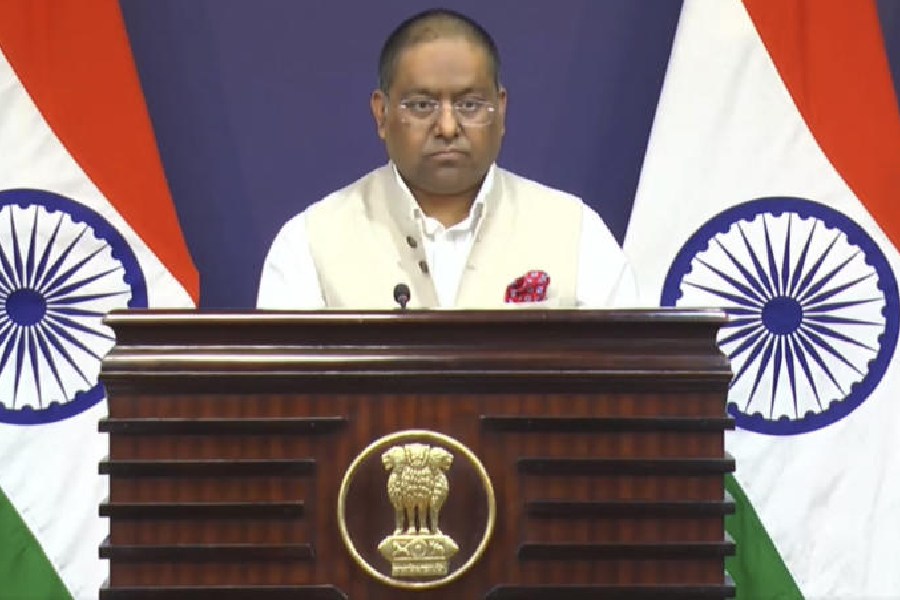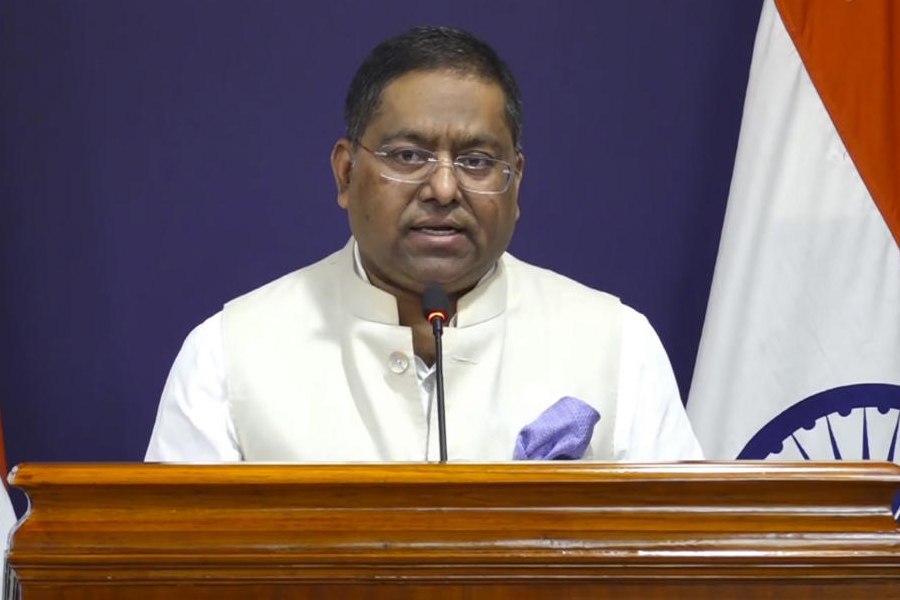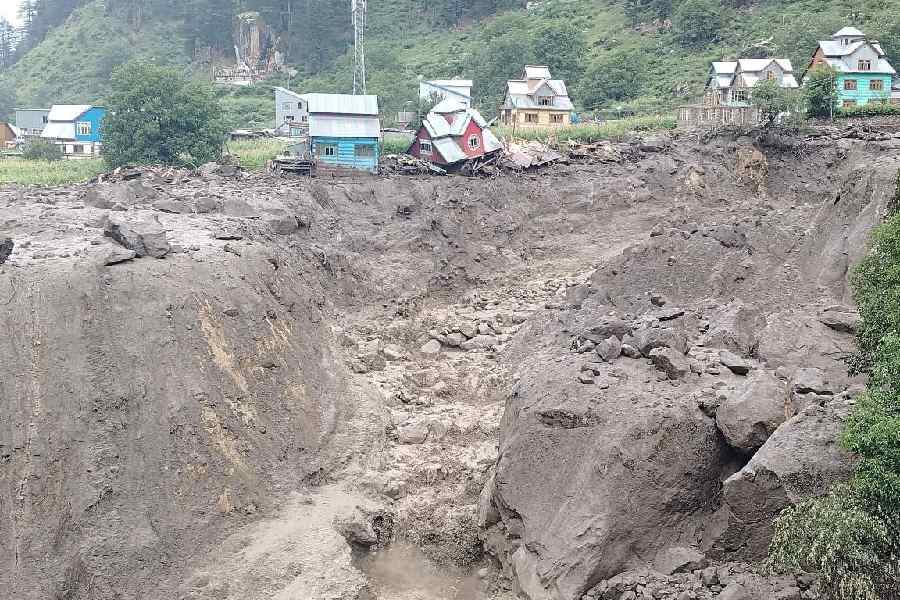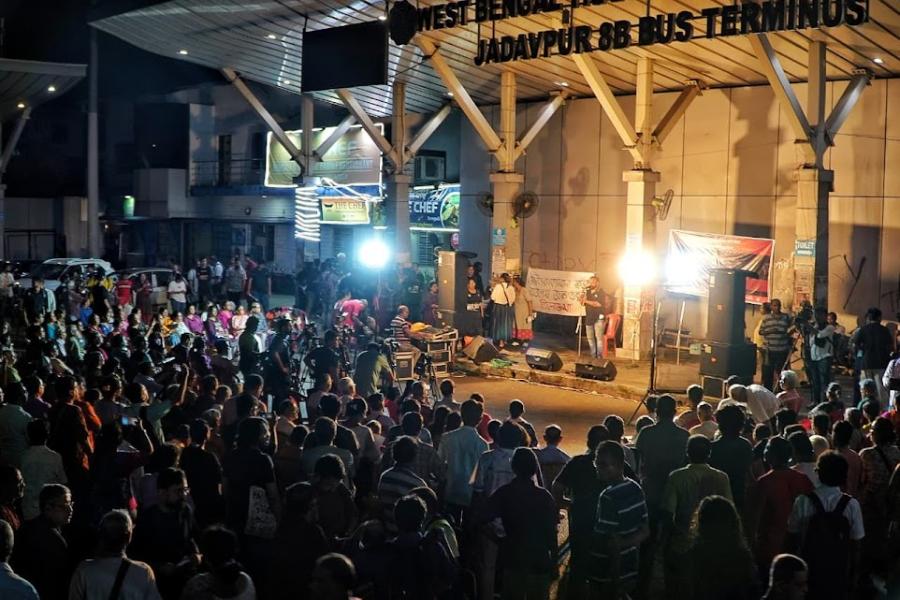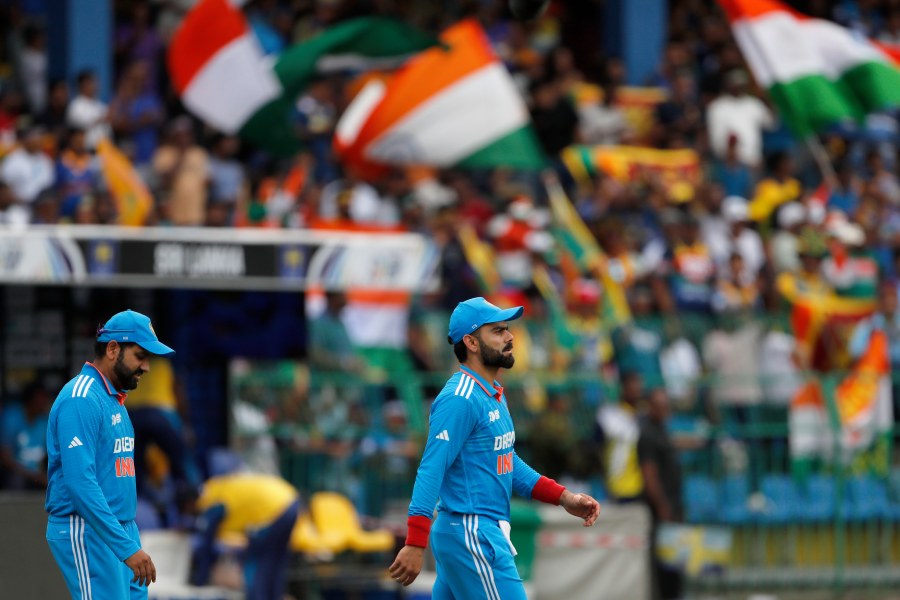Palasa, Jan. 15: Uddanam's joy and curse are both shaped like a bean.
If the cashew crop sustains this backward but scenic region in the northern Andhra Pradesh coast, a mystery disease of the similarly shaped kidney is snuffing out lives by the hundreds.
The 100-odd villages of the region - originally Udhyanavanam, meaning a tranquil garden or forest - have lost about 4,500 people over the past decade to the CKDu, or "chronic kidney disease of unknown aetiology".
Doctors say the figure could be higher. Actor-turned- politician Pawan Kalyan, who recently held a rally demanding more government support for the patients, put the death toll at 20,000 in the past two decades.
Thousands more are suffering from the ailment, detected in the 1990s and given the moniker "Uddanam nephropathy" at the 2013 World Congress of Nephrology in Hong Kong.
Types of CKDu have been reported from Central America, Sri Lanka and Egypt too. Unlike ordinary chronic kidney disease (CKD), mostly caused by diabetes and high blood pressure, the reason for CKDu remains unknown.
Researchers have arrived from institutions such as Harvard University, the Indian Council of Medical Research and Andhra Medical College to test the local water and food habits but the cause remains elusive. Excessive silica in the drinking water has been proposed as a candidate.
.jpg)
The profile of the disease varies from Nicaragua to Lanka to Andhra, but some common factors have been noticed: hot temperatures, heavy agricultural or industrial labour on the part of the patients, a higher incidence among men.
In Uddanam, most of the patients are farm labourers in the cashew and coconut plantations or fisherfolk from the coastal villages. They are men and women of all ages, with a higher proportion of men and those above 40 years.
The disease is pushing families into abject poverty.
A frail Maddu Vasudev, 42, sits in a plastic chair as the morning sunlight washes over his backyard in Akkupalli village, a box of medicines in his lap. A cashew labourer once, he has been confined to his home since being diagnosed with CKDu five years ago.
"I lost about 20kg in these five years. I suffer from high blood pressure and feel exhausted all the time. As soon as I eat something, I vomit it out. It's been years since I have had a good night's sleep," Vasudev says.
The family spends over Rs 10,000 every month on medicines and doctor consultations. "I have to swallow 10 tablets daily. An injection that has to be administered every five days costs Rs 650," says Vasudev.
His family has had to sell off part of its land and borrow Rs 5 lakh to pay for Vasudev's treatment and the education of his son Prasanth, a third-year BTech student.
On January 11, Vasudev was rushed to a private hospital in Visakhapatnam for dialysis after his serum creatinine level shot to 23, nearly 20 times the normal.
Most of the patients here prefer private hospitals in Visakhapatnam - 200km to 250km away from their homes - as the cost of dialysis is borne by the state under its Arogyasri health insurance scheme for the poor.
One of the disease's features is that in its early stages, it produces hardly any symptoms or, at best, non-specific ones like fatigue and loss of appetite. By the time people begin suspecting they are seriously ill, they have suffered irreversible kidney damage.
The advanced symptoms include the yellowing of the eyes and skin, nausea, vomiting, muscle cramps, swollen hands and feet, and breathing problems caused by fluid in the lungs.
The disease is incurable, and transplantation - a potentially life-saving treatment - is difficult because of the unavailability of kidney donors.
.jpg)
Fathers and sons
In Uddanam, it's easy to locate a kidney patient - the fathers of the two kids you see playing on the school ground, or the husband of their midday meal cook, as headmaster Vedulla Giri tells this correspondent.
Records at the Akkupalli primary health centre show 256 kidney patients in the 17 villages it covers. A survey last year showed 292 had died of CKDu in these villages in the past 10 years.
"Parents are scared to let their daughters marry men from our village," says Matta Narayana, a farmer in Loharbanda, where almost every household has a kidney patient.
Blood tests that a private lab carried out in the first week of January on a sample of 50 symptom-less people from Chinnamuniputtuga showed 15 with high serum creatinine levels, suggesting a possible 30 per cent prevalence.
Tirupati Rao, district medical and health officer in Srikakulam, where Uddanam falls, says the number of CKDu patients in Uddanam should be far higher than the official figure of 1,700. "A comprehensive survey is required. We are in that process," Rao says.
Doctors say that some patients tend to hide their symptoms as long as they can because of some sort of "stigma".
In 2013, health authorities had suggested several measures to control the disease, such as regular screening camps, medicines and labs at primary health centres, supply of protected water, pesticide regulation, trained health-care staff and more dialysis units. They have remained on paper.
After Kalyan's recent rally and ultimatum to the state government, chief minister Chandrababu Naidu has promised steps such as mineral water supply, two dialysis centres at Sompeta and Palasa, mobile dispensaries, free bus passes to Vizag's King George Hospital and a pension for the patients.
"We will bring experts from across the world to find out the cause and eradicate the disease," Naidu said.
Ascertaining the cause may take "another four or five years", says Dr T. Ravi Raju, vice-chancellor of the NTR Health University and the nephrologist who coined the term "Uddanam nephropathy".
Dr Pradhan Sivaji, who had along with Dr Krishna Murthy played a key role in bringing the CKDu prevalence in Uddanam to light in the mid-1990s, says the disease is increasingly affecting the young.
Dr Sivaji, now a medical officer at the Sompeta Community Health Centre, believes the salinity of the soil and water may have a role, citing how Iddivanipalem had begun showing an incidence only in the past decade after "the sea came forward by several metres".
The media coverage has led to a rising detection of early cases. In Iddivanipalem, Karre Kumaraswami, 15, stopped going to school four months ago. Instead, he travels to Vizag every week with his father or uncle for dialysis.
"Last July, Kumaraswami had fever. As a swelling of the cheeks was observed too, we took him for tests, which confirmed CKDu," says G. Dillesh, the boy's maternal uncle and a schoolteacher.
The detection of CKDu even in children has scared the elders.
"We never heard of this disease 10 years ago but now even teenagers are getting it. If it spreads like this, what will happen to our next generation?" asks Ganti Rudraiah, father of three schoolchildren, in Iddivanipalem.
The shroud around the cause has had Uddanam speculating wildly, wondering whether its source of livelihood is its curse.
"The question haunts us. If CKDu is proved to have any connection with cashew, we'll stop growing it," says Singupalli Balakrishna, former vice-sarpanch of Akkupalli, as he pensively surveys the cashew orchards all around him.

.jpg)



